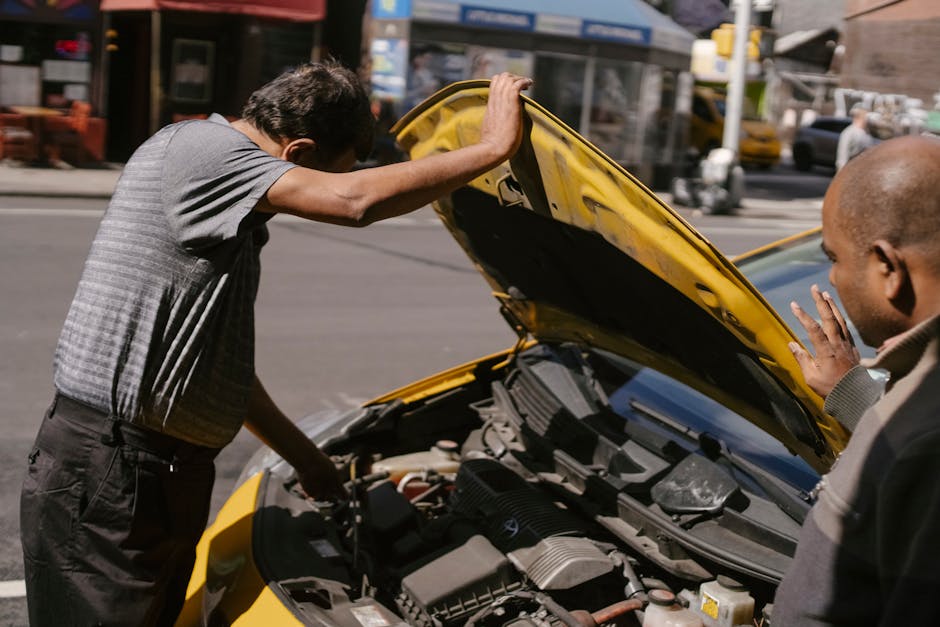In this video, we're gonna be going over the
top five problems that we have found with this first-generation Buick Enclave. I just want to emphasize there's nothing wrong
with this car. Every car has their problems, these are just
the top five that we have found. Number one, timing chains. Now, the timing chains on this vehicle are
located in the front of the motor. They're internal to the engine, and they basically
connect the top part of the motor to the bottom part of the motor. Over time, they will stretch and you may not
notice any drivability issues other than the check engine light coming on. And what those codes are gonna say is basically
the engine isn't timed properly. Whatever adjustments the computer's trying
to make aren't going to be able to compensate for the stretch of the time chain. To help prevent this from happening prematurely,
make sure you change your oil regularly and make sure it's always topped off. Number two, ignition coils. So, because this is a V6 engine, you have
three coils on this side and then three coils on the backside that you can't see.
When you replace these coils, because of the
location of this one, you can't get that out. So you're gonna have to remove the intake
to actually do that. So when you take that off, you want to replace
the intake gasket as well. Some of the symptoms with bad coils you'll
notice is a check engine light that's flashing and the engine will be most likely running
rough. And one of the things that happens is the
coils actually get really hot and you can actually see on the coil where it's actually
burnt. And if you smelled it, it would smell a little
burnt. And when you're replacing those, if you had
a problem, it's always a good idea to do the plugs as well. Number three, water pump. Now, the water pump will start leaking. You should notice some coolant on the ground
in the front of the engine, so more towards the passenger side of the vehicle. Hopefully, you notice that before your engine
starts overheating. If you're doing this job at home, you can
do it from above. You just have to disconnect the battery and
take some of the components out of the way, take the mount out of the way.
And it's actually not that hard to get to,
just a lot of components in your way. Now, you can access the pump from underneath
right here. It's just not too easy if you were gonna do
this on the ground. Take the belt off, take those bolts off the
pulley. And it's a little bit tight, and then you
might even have to pry the motor over a little bit, but you can do it. Number four, the power steering pump. Now the pump is located right here and that's
what's gonna give you the power steering assist. When you turn the wheel back and forth, you
want fluid pressure to go into the steering rack. And if you find that the steering wheel is
binding up, there could either be a lack of fluid or it could be the pump starting to
wear out. So you want to visually look at the pump and
see if it's leaking.

If it's leaking, it needs to be replaced. Now, if the fluid level is low, there's a
couple other areas you can check. The power steering gear itself could be leaking. It looks like this one's leaking. There's fluid leaking into the boots right
there. Also, this hose that's on the backside of
the motor right here, it goes from the pump side all the way across and then into the
steering rack here. That's the pressure side. So you might see it dripping right from where
that attaches to the motor or dripping in this area here. Then, in that case, that's got to be replaced. So check the front of the pump to see if there's
any fluid.
It looks like out of the front seal, there
is fluid coming out. So in that case, this pump would need to be
replaced. If you're looking for where the power steering
reservoir is so you can check the fluid level, it's actually under this cover. Take this oil cap off, grab the cover, pull
it up. It's right there. You can grab the cover, twist it to the left
and then wipe the fluid off, and then recheck it. There we go. There's a min-max line. You want it somewhere in between. Number five, heating and air conditioning
temperature door actuators. A lot of vehicles have dual-zone climate control. So if the passenger's cold, they can turn
up the heat, and if the driver's hot, they can turn on the air conditioning. Now, once in a while you may notice that if
they're both set to a certain setting, that one zone's hot and one zone's cold, or it's
always hot out of the passenger side.
No matter what you do, it's stuck there. In that case, most of the time, it's that
actuator that actually changes the position of the door so it will make it hot or cold. It's just gotta be replaced. Now, where the actuators are on the passenger
side, there's an actuator way up here. You have to take some panels out of the way. And the one for the driver's side is above
the gas pedal on the right. So those are the top five problems that we
found on this Buick Enclave. If you enjoyed this video, make sure you subscribe
to our channel, ring the bell, turn on all notifications so you don't miss any of our
videos..
